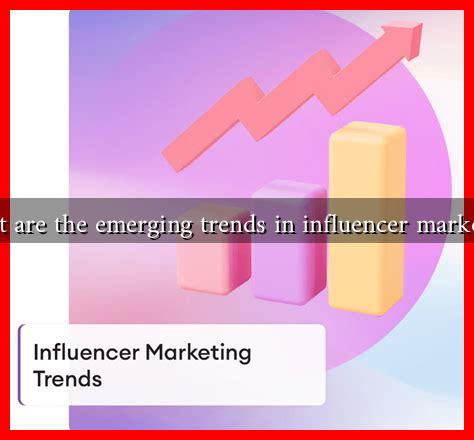-
Table of Contents
Emerging Trends in Influencer Marketing
Influencer marketing has evolved significantly over the past few years, becoming a cornerstone of digital marketing strategies for brands across various industries. As consumer behavior shifts and technology advances, new trends are emerging that shape how brands collaborate with influencers. This article explores the latest trends in influencer marketing, providing insights and examples to help marketers stay ahead of the curve.
The Rise of Micro and Nano Influencers
One of the most notable trends in influencer marketing is the increasing popularity of micro and nano influencers. These influencers typically have smaller followings, ranging from 1,000 to 100,000 followers, but they often boast higher engagement rates compared to their macro counterparts.
- Authenticity: Micro and nano influencers are perceived as more relatable and authentic, which resonates with audiences seeking genuine connections.
- Cost-Effectiveness: Brands can collaborate with multiple micro influencers for the same budget as one macro influencer, maximizing their reach.
- Targeted Audiences: These influencers often cater to niche markets, allowing brands to target specific demographics effectively.
For example, a skincare brand might partner with a beauty micro-influencer who specializes in natural products, reaching a dedicated audience that values organic ingredients.
Video Content Dominance
Video content continues to dominate social media platforms, and influencer marketing is no exception. With the rise of platforms like TikTok and the popularity of Instagram Reels, brands are increasingly leveraging video content to engage audiences.
- Short-Form Videos: Quick, engaging videos capture attention and are easily shareable, making them ideal for influencer collaborations.
- Live Streaming: Influencers are using live streams to connect with their audience in real-time, creating a sense of urgency and exclusivity.
- Storytelling: Video allows influencers to tell compelling stories about products, enhancing emotional connections with viewers.
A case study worth noting is the collaboration between Gymshark and fitness influencers on TikTok, where short workout videos went viral, significantly boosting brand visibility and sales.
Emphasis on Authenticity and Transparency
As consumers become more discerning, the demand for authenticity and transparency in influencer marketing has grown. Brands are now prioritizing partnerships with influencers who align with their values and can authentically represent their products.
- Disclosure of Partnerships: Influencers are expected to disclose paid partnerships clearly, fostering trust with their audience.
- Brand Values Alignment: Collaborating with influencers who share similar values enhances credibility and resonates with consumers.
- User-Generated Content: Brands are encouraging influencers to create user-generated content, showcasing real-life experiences with products.
For instance, the #ad hashtag has become commonplace on social media, ensuring that followers are aware of sponsored content, which helps maintain transparency.
Data-Driven Influencer Selection
With advancements in technology, brands are increasingly relying on data analytics to inform their influencer selection process. This trend allows marketers to make more informed decisions based on metrics rather than intuition alone.
- Engagement Rates: Brands are analyzing engagement rates to identify influencers who can drive meaningful interactions.
- Audience Demographics: Understanding the demographics of an influencer’s audience helps brands target their ideal customers.
- Performance Metrics: Brands are tracking the performance of influencer campaigns through metrics like ROI, conversions, and reach.
Tools like HypeAuditor and Upfluence provide valuable insights into influencer performance, enabling brands to optimize their marketing strategies.
Conclusion
As influencer marketing continues to evolve, staying informed about emerging trends is crucial for brands looking to leverage this powerful marketing strategy. The rise of micro and nano influencers, the dominance of video content, the emphasis on authenticity, and the use of data-driven approaches are shaping the future of influencer marketing. By adapting to these trends, brands can create more effective campaigns that resonate with their target audiences and drive meaningful results.
For more insights on influencer marketing trends, consider exploring resources from HubSpot and Social Media Examiner.


